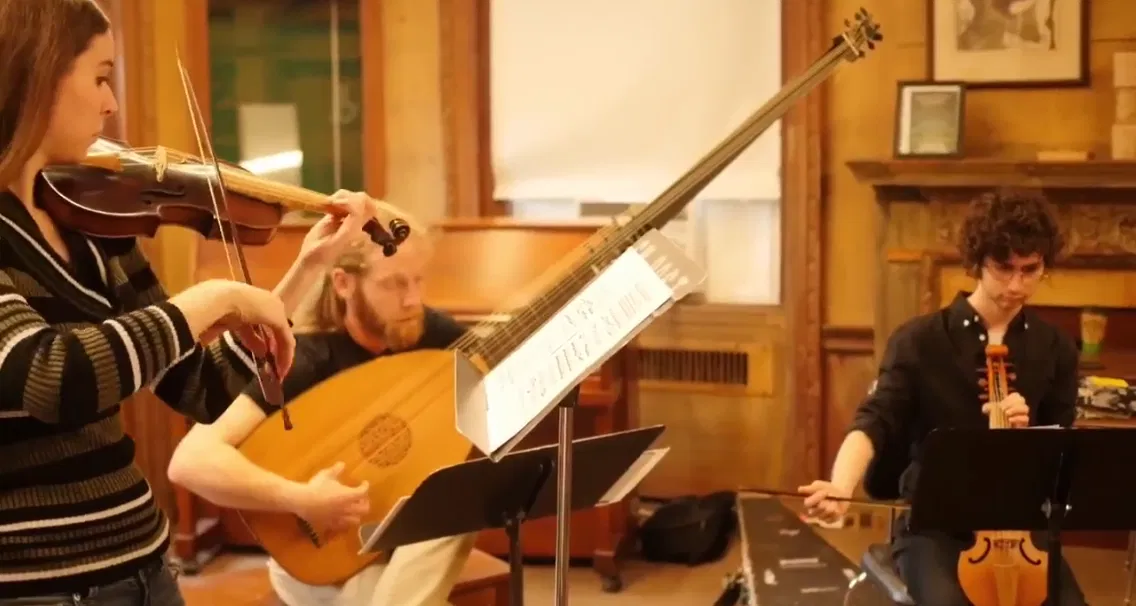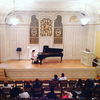
Stories from France and The Czech Republic
Southwest Berkeley, Berkeley
Sun, June 3, 2018, at 7:00 PM,
PDT
-
Capacity
- 14 of 25 spots still available
-

- Bring your own drinks
-
Wheelchair access
- Not wheelchair accessible
This is a groupmuse
A live concert in a living room, backyard, or another intimate space. They're casual and friendly, hosted by community members.
Host
Each taking half a keyboard, Chelsea and Lukáš play 4-hand classical piano music with heavy folk elements, and lead the audience through the intricate development of inspiration sources for 20th century composers.
What's the music?
Debussy - Petite Suite, movt III & IV
Ravel - "Mother Goose" Suite, movt I, III & V
Novák - Rustica Musa II
Dvořák - Selections from Slavonic Dances
POSSIBLY ON THE PROGRAM - if you like us so much
- Improvisation games!
- Dutilleux Piano Sonata (1948) - 1st movt
- Janacek "In the Mists"
Debussy - Petite Suite
This suite was first performed in a salon in Paris in 1889, this is a period that Debussy had just escaped the undesirable music scene of Rome and discovered the operas of Wagner, bringing him a lasting inspiration and encouraging Debussy to continue his path of composing with non-traditional harmonies and chromaticism. The 3rd movement “Menuet” and 4th movement “Ballet” contains an uplifting brightness, and many melodies that had become so popular that most of us forgot that they were originated from one of the most influential French composer.
Ravel - "Mother Goose" Suite
This piano suite was premiered in 1910, by two young pianists aged 12. Ravel dedicated this suite to the two children of the Godebski family, a few years after he dedicated his Sonatine towards the Godebski couple. Titled “Mother Goose”, this suite contains five movements themed around fairy tales and exotic characters, a prominent inspiration of classical music in the early 20th century.
Since the music was dedicated to two young children, the score itself was embedded with text excerpts of the tales, as the character of simplicity and the other-worldly strangeness flows through the music.
Novák - Rustica Musa II
Jan Novák’s life has a complicated history as he was always against the social communist regime, and as a public figure, he conflicted much of the Eastern ideology and his music was politically nonconformist for the then government. In 1968, when he was touring Italy, Russians invaded the Czechoslovakia and Novák was cut from his home and his family. When the situation slightly settled, he was offered a one-way ticket to home, but he decided to not to return and was fortunate enough that his family emigrated with him to Italy. He couldn’t, nor did he want to, contribute to any of the preponderant musical avantgarde-streams of the time, thus he became an outsider in the world of western contemporary music. His free use of tonality and clear structures, his creative invention, and omnipresent humour and wit, reflect his positive and humanistic view of the world.
Rustica Musa II was written during his “Italian years” as a nostalgic memory of his home environment of Moravia. Novák extraordinarily arranged 8 Moravian folk songs into a cycle for 4-hands piano; he was also deeply fascinated by Latin and studied it profoundly, even used in his daily life. Thus, confirming his sense of humour, he translated all the Moravian folk songs into Latin, and put a Latin translation as the title of each song.
Dvořák - Slavonic Dances
Dvořák’s Slavonic Dances is a collection of Bohemian dances originally written for piano four hands after he was inspired by Brahms’ Hungarian Dances. Before the Dances were published, Dvořák was a relatively unknown composer. Thanks to winning the Austrian State Prize in which Johannes Brahms was part of the jury; Brahms, enchanted by his Moravian Duets, referred him to his own publisher, whom asked Dvořák to write something with a dance character. Inspired by Brahms, Dvořák wrote original compositions inspired by Bohemian folk dances - meaning, he had not used any of the existing folk tunes, unlike Brahms in his Hungarian dances. Simrock, Brahms’ publisher, was amazed by Dvořák’s work and asked him to orchestrate the set. With the orchestrated version, Dvořák achieved a certain milestone in the world of classical music, yet it was the original piano version that became popular to the extent that people would play it in local pubs while celebrating and drinking.
Hope you can join us to share this music!
Location
Exact address sent to approved attendees via email.
This is a groupmuse
A live concert in a living room, backyard, or another intimate space. They're casual and friendly, hosted by community members.
Host
Attendees









 Continue with Facebook
Continue with Facebook
 Continue with Google
Continue with Google
 Continue with Apple
Continue with Apple
Comments
Comment sections are only for participants.